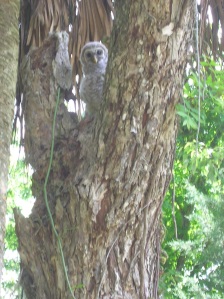 It is a dilemma we often have to face, dealing with a dead tree. Should it be removed or left in place? The answer to the question is that “it depends.”
It is a dilemma we often have to face, dealing with a dead tree. Should it be removed or left in place? The answer to the question is that “it depends.”
Of course if there are structures that could be damaged as limbs — or the tree itself — falls then the answer is pretty clear. Better remove it. If the tree was diseased and might infect nearby trees, then it is best cut and properly discarded. In some cases (like with ambrosia beetle or emerald ash borer infestations) the cut tree or firewood from that cut tree should not be moved from the property due to the possibility of spreading the infestation to other areas. Contact your local agricultural agent for advice if you suspect your tree died from these insects.
But on the other hand if there is no danger from falling limbs and no invasive insect infestation, I would heartily recommend leaving it in place.
There are at least two reasons for this. No. 1 is that the dead tree attracts a number of boring insects and will provide a food source for insect-seeking birds such as woodpeckers. And the best reason to leave that dead tree in place is that it can become a nesting site for any number of cavity-nesting birds, such as woodpeckers or owls.
As the tree degrades and begins to rot away, it can provide habitat for a number of other organisms and eventually it will compost, adding nutrients to the soil where it once stood. Your old tree can go on to enrich your landscape and life.


 While I would not recommend “pinching” many plants, that delightful shrub bougainvillea thrives on it. A tropical that Carmen Miranda would choose, bougainvillea hails from Brazil, her home country. It too is colorful, jazzy like Carmen and not exactly cold tolerant, making it a good choice for container growing. This could well be the plant for the gardener with more to do than stand around and water plants, being very forgiving of those who forget to water their gardens too.
While I would not recommend “pinching” many plants, that delightful shrub bougainvillea thrives on it. A tropical that Carmen Miranda would choose, bougainvillea hails from Brazil, her home country. It too is colorful, jazzy like Carmen and not exactly cold tolerant, making it a good choice for container growing. This could well be the plant for the gardener with more to do than stand around and water plants, being very forgiving of those who forget to water their gardens too.


